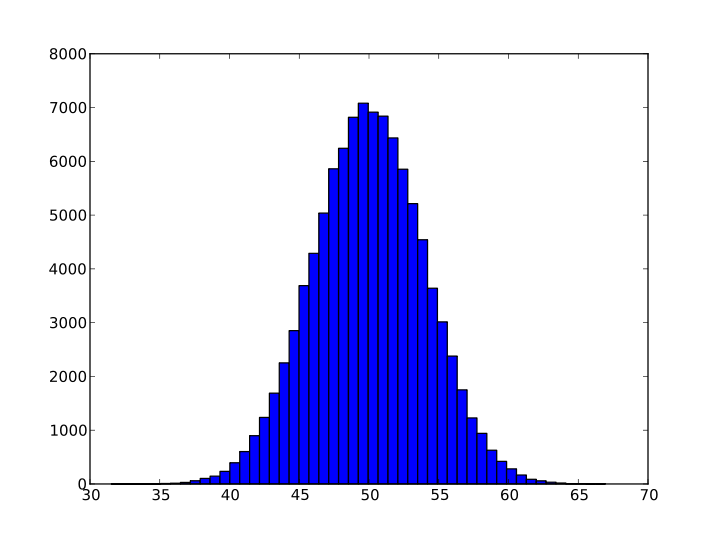
Begin with a row from the Pascal triangle, preferably some large exponent , derive the Gaussian Distribution.
Solution
The bell curve is a probability density curve of binary systems. Then the probability at a some displacement from the medium is
P(n,k)=(nk)2−n=(21n+k)!(21n−k)!2nn!
Using the Stirling approximation and treating k=2σ, we have
P(n,σ)∼(2πn)21(2n)n(4n2−σ2)−21(n+1)(n−σn+σ)2−σ.
For n>>σ, n−σn+σ∼1+n2σ; hence, for large n
P(n,σ)∼(2πn)21(1−n2σ2)−21(n+1)(1+n2σ)2−σ.
Taking the logarithm yields
ln(P(n,σ))∼21ln(πn2)−21(n+1)ln(1−n2σ2)−2σln(1+n2σ).
For small x, ln(1+x)≈x; subsequently,
ln(P(n,σ))∼21ln(πn2)−21(n+1)(−n2σ2)−2σ(n2σ)
or
ln(P(n,σ))∼21ln(πn2)+n2σ2−2nσ2.
Since n2σ2 vanishes faster than 2nσ2 for very large n, we arrive at the result:
P(n,σ)=(πn2)21e2n−σ2.
Check out my other notes at Proof, Disproof, and Derivation
#Calculus
#GaussianDistribution
#TaylorExpansions

Easy Math Editor
This discussion board is a place to discuss our Daily Challenges and the math and science related to those challenges. Explanations are more than just a solution — they should explain the steps and thinking strategies that you used to obtain the solution. Comments should further the discussion of math and science.
When posting on Brilliant:
*italics*or_italics_**bold**or__bold__paragraph 1
paragraph 2
[example link](https://brilliant.org)> This is a quote# I indented these lines # 4 spaces, and now they show # up as a code block. print "hello world"\(...\)or\[...\]to ensure proper formatting.2 \times 32^{34}a_{i-1}\frac{2}{3}\sqrt{2}\sum_{i=1}^3\sin \theta\boxed{123}Comments
There are no comments in this discussion.